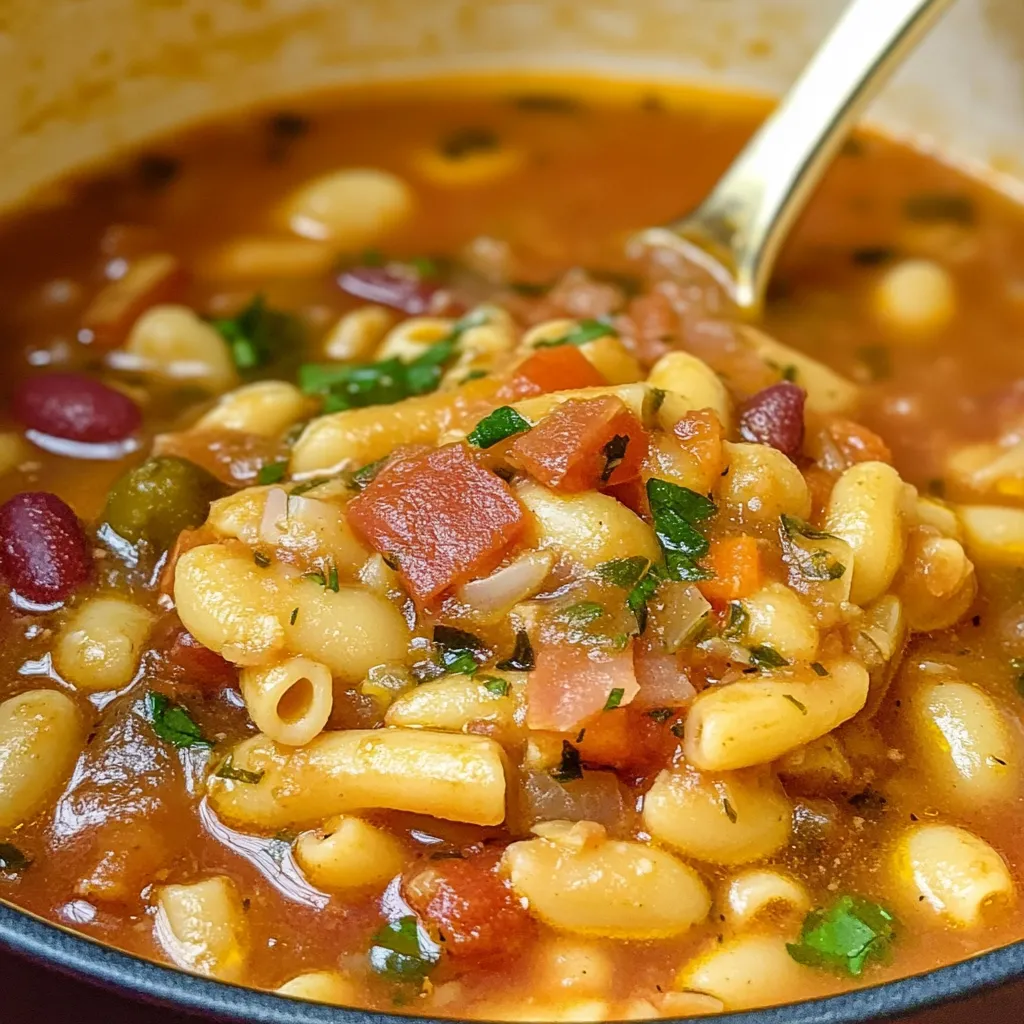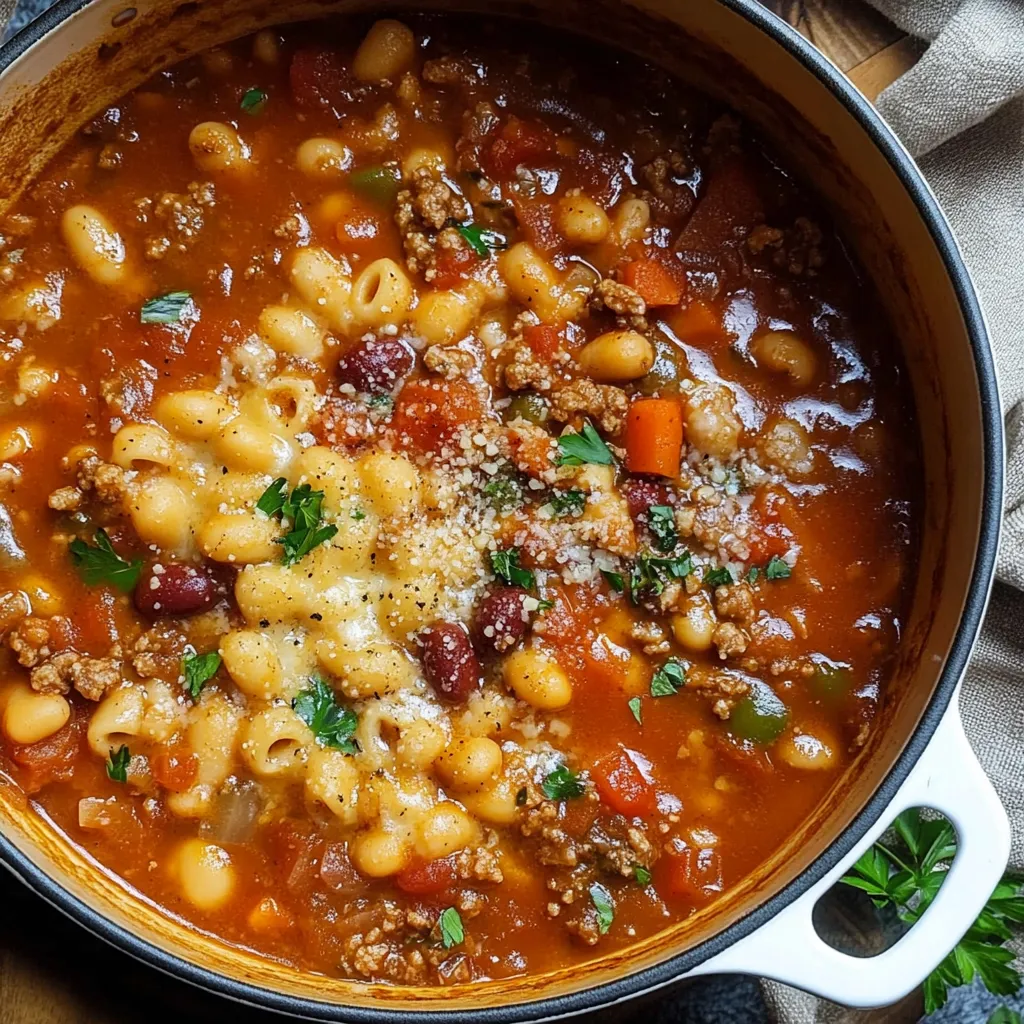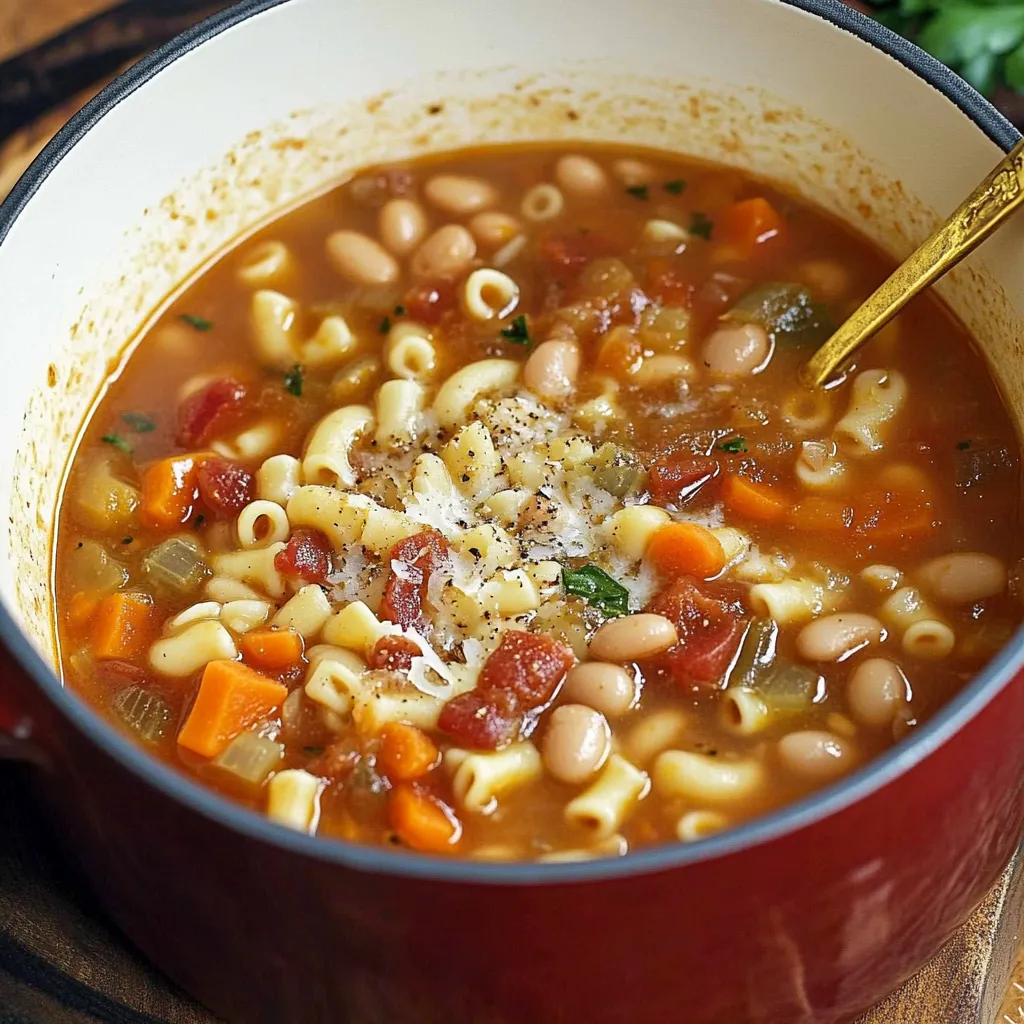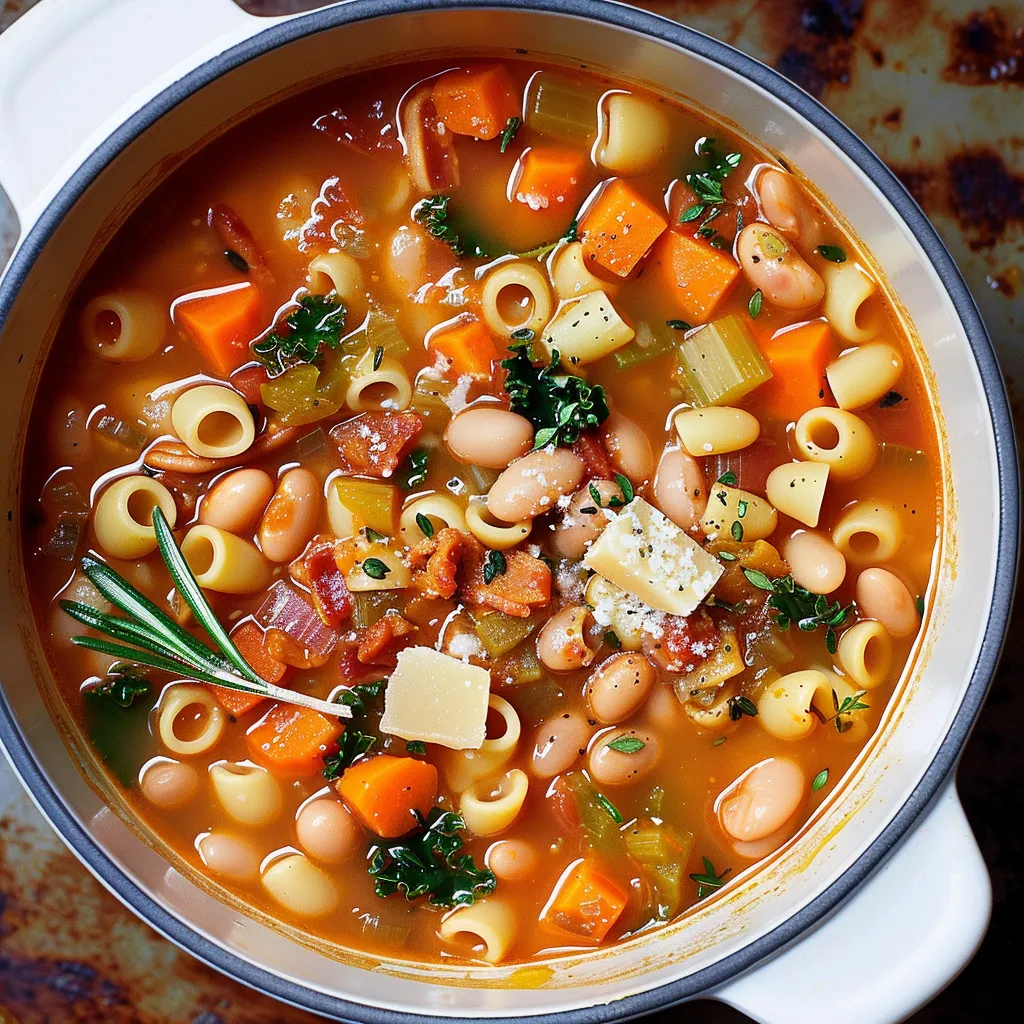 Pin it
Pin it
This rustic Italian Pasta e Fagioli turns basic pantry items into a deeply satisfying bowl that fills you up and warms your soul. By mixing two bean varieties with soft pasta and fragrant veggies, you'll create a substantial meal that's way better than you'd expect. Each bite gives you just-right pasta, smooth beans, and veggies swimming in tasty broth with herbs and bacon if you want it. This dish shows how everyday stuff, when handled with love, turns into something really special.
My Italian family background taught me that layering flavors gradually and picking good ingredients makes all the difference.
Key Ingredient Breakdown
- Aromatic veggies build the flavor foundation
- Using two kinds of beans creates interesting textures
- Tiny pasta shapes don't get mushy in soup
- Rich broth boosts overall taste
Go for reduced-sodium broth and beans so you can adjust the salt yourself. Using fresh garlic and herbs really does matter.
Step-By-Step Cooking Guide
- 1. Set up everything before you start.
- Cut onion, carrots, and celery into tiny, equal-sized cubes (roughly ¼ inch) so they cook evenly. Chop garlic right before using – don't use the jarred stuff if you can help it. If you're adding bacon, slice it into small bits. Wash beans thoroughly in a strainer and check for tiny stones. Getting everything ready first makes cooking smoother and helps with timing. Keep all your ingredients within arm's reach.
- 2. Warm up a big pot over medium heat.
- Pour in olive oil and wait till it gets shiny. Throw in your diced onion, carrots, and celery (Italians call this mix soffritto), and stir now and then until everything softens and onions turn see-through, around 5-7 minutes. Add your chopped garlic during the last minute so it won't burn. If you're using bacon, put it in now and cook until the fat melts and bacon gets crispy, about 3-4 minutes.
- 3. Pour in the chopped tomatoes with all their juice,
- and use a wooden spoon to scrape the brown bits off the bottom – that's where the good flavor hides. Add chicken broth and bring everything to a gentle bubble. Drop in both types of beans, dried herbs, red pepper flakes if you want some heat, and a bouillon cube. Add black pepper but hold off on salt until later. Lower the heat to keep it just barely bubbling, partly cover the pot, and let it cook 15-20 minutes until veggies get soft and flavors mix together.
- 4. When it comes to the pasta, you've got two choices:
- cook it right in the soup or cook it separately. If you're eating right away, toss the pasta directly into the bubbling soup and cook until it's got a slight bite, stirring occasionally so it doesn't stick. If you're making leftovers, cook pasta separately in salty water until it's almost done, then add it to individual bowls. This keeps the pasta from getting mushy and drinking up all the broth during storage.
- 5. Getting the taste right at the end matters a lot.
- Try the soup and add salt, pepper, and more herbs if needed. Remember that Parmesan cheese will make it saltier later. The soup should be thick enough to be filling but still have enough liquid to be clearly soup-like. Add more hot broth if it's too thick. Top it off with freshly grated Parmesan and chopped parsley just before you serve it.
 Pin it
Pin it
After years of making Italian food, I've found that taking time with each cooking step makes everything taste more authentic. Never rush cooking those first veggies – they're what makes your soup taste amazing.
 Pin it
Pin it
Smart Storage Tips
Keep soup and pasta in separate sealed containers for up to 5 days in your fridge. If they're already mixed, the soup will get much thicker as the pasta soaks up the broth. When heating it up again, add warm broth until it looks right. For freezing, store just the soup without pasta for up to 3 months. Let it thaw in the fridge overnight, warm it up gently, and add freshly cooked pasta. Always let soup cool down before putting it in the fridge.
How To Serve It Right
Dish it up hot with extra Parmesan sprinkled on top, fresh parsley, and a splash of good olive oil. Serve with crusty Italian bread or garlic bread for dipping. Make it a full meal by adding a simple green salad with vinaigrette. You might want to put red pepper flakes and black pepper on the table so people can spice it up however they like.
Fixing Common Problems
If your soup gets too thick, slowly add hot broth or water. For soup that's too watery, let it bubble without a lid until it thickens up. When pasta gets too soft, try throwing in a handful of fresh pasta to fix the texture. If beans are still hard, just keep simmering until they soften. If tomatoes make it too tangy, add a tiny bit of sugar to balance it out.
Prep-Ahead Options
Cut up veggies and measure ingredients the day before. Make the soup base without pasta up to 2 days ahead. Cook pasta fresh right before eating. When having people over, get everything ready and combine just before serving. Keep extra hot broth handy to adjust thickness.
Tasty Twists
Try adding spinach or kale in the last few minutes of cooking. Play around with different beans like borlotti or great northern. Meat fans can throw in Italian sausage along with the bacon. The veggie version works great with vegetable broth and no bacon. Some areas of Italy add rosemary or sage – use whatever herbs you like best. The basic cooking method stays the same while you put your personal spin on it.
 Pin it
Pin it
Frequently Asked Questions
- → Can I make this vegetarian?
- Absolutely, just leave out the bacon and swap chicken broth for veggie broth
- → What if I can't find ditalini pasta?
- Any tiny pasta works fine - try small shells, orzo, or little elbow noodles
- → Why is my soup too thick?
- The pasta soaks up liquid while cooking - just pour in more broth until it looks right
- → Can I use different beans?
- Sure thing, mix and match white beans, kidney beans, or navy beans however you like
- → How long does it keep?
- It'll stay good in your fridge for 3-4 days, but the pasta might get softer
